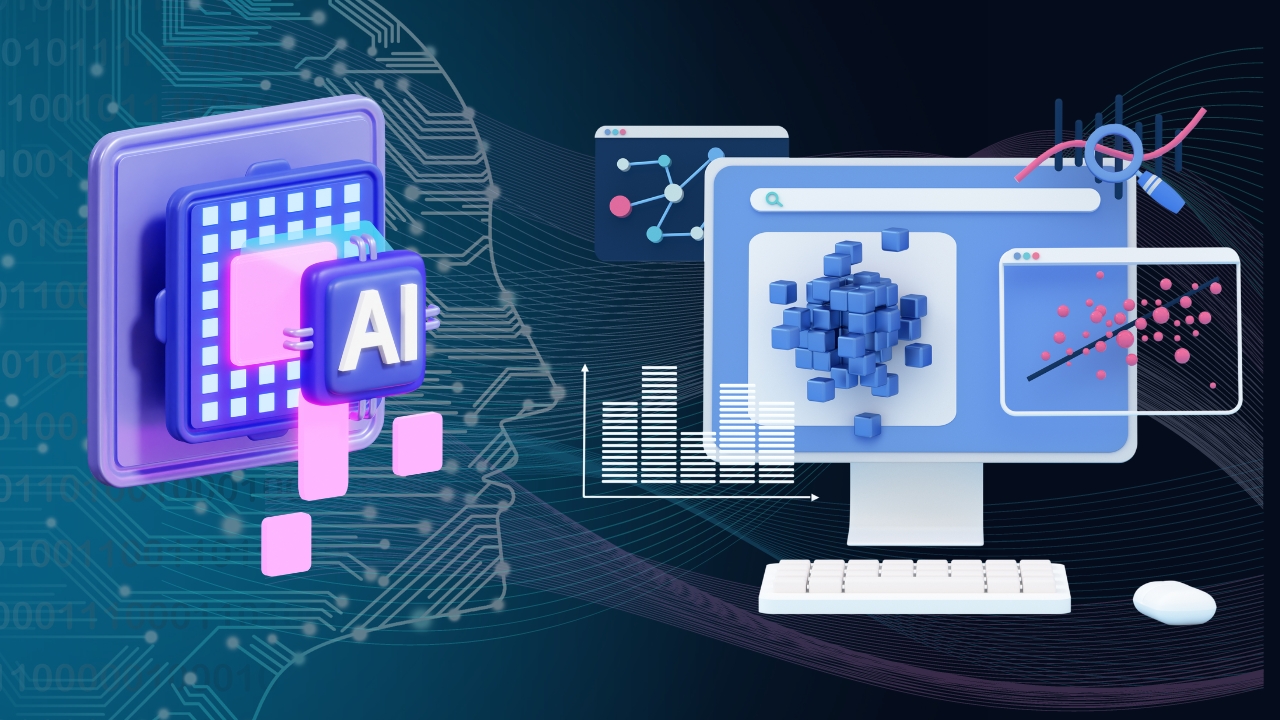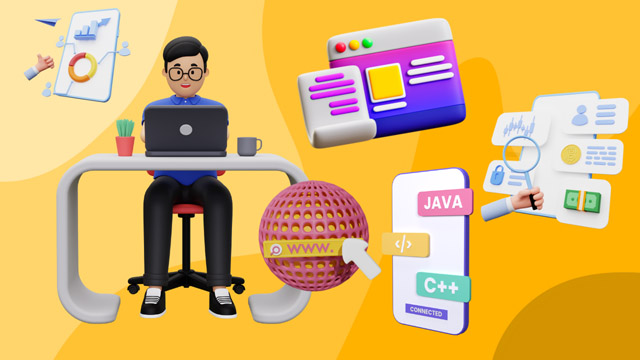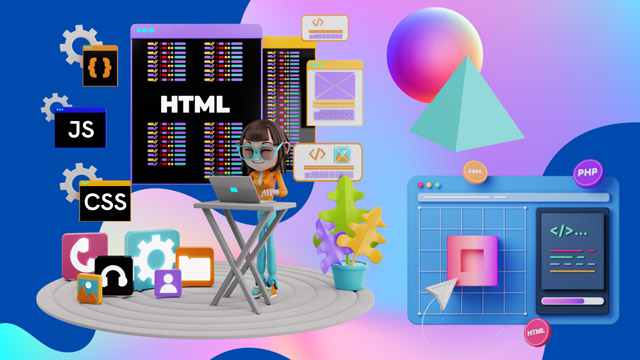The course illustrates AI's impact across sectors like healthcare and finance, explores AI fields deeply, and introduces practical AI tools for education. It covers machine learning fundamentals, data science integration, and features case studies of AI in major companies. The course concludes with insights into AI adoption, tech giants, career prospects, and government initiatives, making it a comprehensive guide in the AI and ML landscape.

KLiC AI-ML Basics
The KLiC AI-ML course by offers a thorough exploration of Artificial Intelligence (AI) and Machine Learning (ML). Designed for individuals of all levels, it covers historical context, intelligence concepts, and ethical considerations in AI, functioning of AI-ML models, and AI-ML apps to make daily tasks more productive.
Introduction
Who Should Join
- Students and Graduates in Computer Science and Related Fields: To gain foundational knowledge in AI and ML, enhancing academic and career prospects.
- IT Professionals Seeking Skill Enhancement: To stay updated with emerging technologies and integrate AI-ML concepts into their work.
- Data Analysts and Aspiring Data Scientists: To understand AI-ML models and their applications in data analysis and predictive modeling.
- Business Professionals and Managers: To leverage AI-ML for strategic decision-making and improving business processes.
- Entrepreneurs and Start-up Enthusiasts: To explore AI-ML applications for innovative product development and business solutions.
- Educators and Trainers: To incorporate AI-ML concepts into curricula and training programs.
- Individuals Interested in Emerging Technologies: To gain insights into AI-ML and their impact on various industries.
What you'll learn ?
A unique aspect of the course is the inclusion of "Case Studies of AI and ML," where learners will analyse the practical applications of AI and ML in major companies such as Google, Microsoft, YouTube, Uber, Amazon, Apple, Netflix, Facebook, Paytm, and Zomato. These case studies o;er real-world insights into how these companies leverage AI for search algorithms, fraud detection, personalized recommendations, and more.
Certification
- MKCL provides certificate to the KLiC learner after his/her successful course completion
Academic Approach
The academic approach of the courses focuses on the “work-centric” education i.e. begin with work (and not from a book!), derive knowledge from work and apply that knowledge to make the work more wholesome, useful and delightful. The ultimate objective is to empower the Learner to engage in socially useful and productive work. It aims at leading the learner to his/her rewarding career as an employee or entrepreneur as well as development of the community to which s/he belongs. Learning methodology:
- Step -1: Learners are given an overview of the course and its connection to life and work.
- Step -2: Learners are exposed to the specific tool(s) used in the course through the various real-life applications of the tool(s).
- Step -3: Learners are acquainted with the careers and the hierarchy of roles they can perform at workplaces after attaining increasing levels of mastery over the tool(s).
- Step -4: Learners are acquainted with the architecture of the tool or tool map so as to appreciate various parts of the tool, their functions, utility and inter-relations.
- Step -5: Learners are exposed to simple application development methodology by using the tool at the beginner’s level.
- Step -6: Learners perform the differential skills related to the use of the tool to improve the given ready-made industry-standard outputs.
- Step -7: Learners are engaged in appreciation of real-life case studies developed by the experts.
- Step -8: Learners are encouraged to proceed from appreciation to imitation of the experts.
- Step -9: After the imitation experience, they are required to improve the expert’s outputs so that they proceed from mere imitation to emulation.
- Step-10: Emulation is taken a level further from working with differential skills towards the visualization and creation of a complete output according to the requirements provided. (Long Assignments)
- Step-11: Understanding the requirements, communicating one’s own thoughts and presenting are important skills required in facing an interview for securing a work order/job. For instilling these skills, learners are presented with various subject-specific technical as well as HR-oriented questions and encouraged to answer them.
- Step-12: Finally, they develop the integral skills involving optimal methods and best practices to produce useful outputs right from scratch, publish them in their ePortfolio and thereby proceed from emulation to self-expression, from self-expression to self-confidence and from self-confidence to self-reliance and self-esteem!
Syllabus
- Introduction to Artificial Intelligence and Machine Learning
- Kunal's musical adventure with ‘Spotify’
- Objectives
- Introduction to AI
- History of AI
- Definition and its importance
- What is Generative AI?
- Teaching machines to mimic human intelligence
- Understanding the basics of AI
- Concept of 'Intelligence'
- Human Intelligence vs. Machine Intelligence
- Types of AI
- Narrow AI
- General AI
- Super intelligent AI
- Components of AI
- Understanding how machines learn from data
- Power of 'Reasoning'
- The ability of problem-solving
- Discussing how machines interpret sensory information
- Linguistic Intelligence
- Perception and Computer Vision
- Robotics and Motion
- Knowledge Representation
- Planning and Navigation
- Ethics in AI
- The 3 key areas of AI ethics
- Privacy and data protection
- Bias and discrimination
- How to establish AI ethics?
- Sustainability in AI
- Recap and outcome
- FAQs
- Summary
- Objectives
- Overview of AI and its growing impact
- Understanding AI and its evolution
- Importance of Human-AI interaction
- Benefits of AI integration in various sectors
- Human-AI interaction and collaboration
- Balancing automation and human expertise
- AI as a supportive tool in decision-making
- Fostering trust and understanding between 'Humans' and 'AI'
- AI in Healthcare
- Medical diagnostics and imaging
- Drug discovery and development
- Virtual health assistants
- AI in Finance
- Enhancing fraud detection and risk management
- Automated trading systems and market analysis
- AI-Powered personalized financial advice
- AI in Business and Marketing
- AI-driven market analysis and trends
- Personalization in customer engagement
- AI-powered digital advertising
- AI in Education
- Personalized learning platforms
- AI-driven tutoring and assessment
- Adaptive educational content
- AI in Manufacturing
- Automation and robotics
- Predictive maintenance
- Quality control and inspection
- AI in Fashion
- Personalized shopping experience with AI recommendations
- AI-driven design and trend prediction
- Supply chain optimization and inventory management
- AI in Agriculture
- Precision farming and crop monitoring
- AI-based pest and disease detection
- Smart irrigation and yield prediction
- AI in Entertainment and Media
- Content recommendation systems
- AI-generated art and music
- Virtual reality and augmented reality experiences
- AI in Environmental Sustainability
- Climate Modeling and prediction
- Smart grids and energy management
- Conservation and wildlife monitoring
- Recap and outcome
- Summary
- Objectives
- Introduction to Machine Learning
- Key components and processes of Machine Learning
- How Algorithms work in Machine Learning?
- Applications of Machine Learning
- Benefits and drawbacks of Machine Learning
- Introduction to Deep Learning
- Artificial Neural Networks
- Structure and components of Artificial Neural Networks
- Overview of Neural Network types
- Benefits and drawbacks of Deep Learning
- Introduction to Natural Language Processing (NLP)
- Applications of NLP in Machine Learning
- Introduction to Computer Vision
- Technologies involved in Computer Vision
- Introduction to Cognitive Computing
- Benefits of Cognitive Computing
- Summary
- Objectives
- Introduction to AI tools
- The importance of AI tools in education
- Role of Global Accessibility
- A brief overview of various AI tools
- Commonly used AI tools and frameworks
- Other commonly used tools and frameworks
- Exploring Grammarly
- Using Grammarly for education purposes
- AI generates automatic feedback in Grammarly
- More uses of Grammarly in education
- Introduction to Google Scholar
- Features of Google Scholar
- Using Google Scholar for research
- Citation analysis and finding conference papers
- Metrics and ranking
- Interdisciplinary analysis
- Introduction to Evernote
- Features of Evernote
- Utilizing Evernote as a learning aid
- Getting started with Evernote
- Additional features
- Introduction to Coursera
- Features of Coursera
- Using Coursera to educate students
- Using Coursera to educate professionals
- Outcome
- Introduction to Quizlet
- Features of Quizlet
- Uses of Quizlet for education
- Uses of various modes
- Getting started with Quizlet
- Outcome
- Introduction to Wolfram Alpha
- Features of Wolfram Alpha
- Use of Wolfram Alpha for students
- Use of Wolfram Alpha for teachers
- The attractive interface of Wolfram Alpha
- Outcome
- Introduction to some creative AI tools
- ChatGPT
- DALL-E 2
- Playgroundai.com
- Visily.ai
- Practical Application of AI Tools
- Virtual assistance
- Online shopping
- Navigation and maps
- Language translation
- Home device assistance
- Various devices that make use of AI
- Security and surveillance
- Gaming
- Facial recognition
- Recap and outcome
- Summary
- Objectives
- What is Machine Learning?
- Types of Machine Learning
- Unsupervised Machine Learning
- Semi-Supervised Learning
- Reinforcement Learning
- Transfer Learning
- Practical Applications
- Speech Recognition
- Cybersecurity
- Social Media Personalization
- Feature Engineering
- Machine Learning Algorithms
- Linear Regression
- Ethical Considerations in Machine Learning
- Future Trends in Machine Learning
- Summary
- Objectives
- Introduction to Data and Data Science
- Understanding data and datasets
- Different types of data
- Real-life examples of data sets
- Good data is important
- AI reveals meaningful data insights
- Getting data ready
- Data and AI connection
- The connection between AI, Data and Machine Learning
- Teaching AI with data
- The process of working with data and AI
- Tricky parts of data-driven AI
- Why is artificial intelligence important?
- Summary
Objectives Introduction to AI and ML in daily and professional life Key benefits of AI and ML in daily life Usage of AI through smartphones AI-based applications via smartphones Virtual Assistant usage through smartphones AI-based smart home appliances AI and ML in transportation AI usage for entertainment and information AI solutions for security requirements Scope of AI in personal financial planning AI in healthcare monitoring and tracking AI in career and skill development Summary
- Objectives
- Introduction to AI and ML case studies
- Understanding AI and ML in real-world scenarios
- Importance of AI and ML Use Cases
- Search algorithms
- Ad placements
- Self-Driving cars
- Voice recognition
- Microsoft
- Office 365 and productivity
- Azure: Predictive analysis and anomaly detection
- The emergence of Microsoft Co-pilot
- YouTube
- Video recommendations
- Content moderation
- Analytics and insights
- Uber
- Dynamic Pricing and Ride Predictions
- Route Optimization and Driver Support
- Amazon
- Product recommendations
- Supply Chain Optimization
- Fraud Detection and Customer Security
- Apple
- Siri: Natural Language Processing
- Face ID: Biometric Authentication
- Personalized Experiences and Product Suggestions
- Netflix
- Content recommendation algorithms
- Optimizing streaming quality
- AI-enhanced content creation
- News feed customization
- Automated content moderation
- AI-powered advertising targeting
- Paytm
- Fraud detection and prevention
- Personalized financial recommendations
- Customer support chatbots
- Zomato
- Restaurant recommendations
- Food delivery optimization
- Menu personalization
- Recap and outcome
- Summary
- Objectives
- Overview of modern applications
- Major companies adopting AI
- Adobe: Generative Fill and other tools
- Swiggy and Zomato
- Flipkart: AI in eCommerce
- Ola: Real-time scenario of traffic
- Global tech giants and AI integration
- Google: AI in search and services
- Microsoft's Co-pilot, and Bing
- Integration of AI in WhatsApp
- Innovative AI tools and platforms
- Recap and outcome
- Summary
- Objectives
- Overview of new age AI careers
- Current outlook on AI jobs
- AI careers that you can pursue
- Various industries hiring AI professionals
- What do you need for an AI career?
- AI careers FAQs
- Summary
- Objectives
- Discussing the Impact of AI and ML on citizen lives
- Role of AI and ML in the Indian Government
- Various Government schemes and initiatives in AI and ML
- Aadhar Identification System
- Smart cities and urban planning
- MyGov AI portal
- Predictive Policing
- E-Courts and case prediction
- COVID-19 management
- AI Integration in IRCTC
- AI in Agriculture
- AI in Aviation
- Summary
Evaluation Pattern
Evaluation Pattern of KLiC Courses consists of 4 Sections as per below table:
| Section No. | Section Name | Total Marks | Minimum Passing Marks |
|---|---|---|---|
| 1 | Learning Progression | 25 | 10 |
| 2 | Internal Assessment | 25 | 10 |
| 3 | Final Online Examination | 50 | 20 |
| Total | 100 | 40 | |
| 4 | SUPWs (Socially Useful and Productive Work in form of Assignments) | 5 Assignments | 2 Assignments to be Completed & Uploaded |
YCMOU Mark Sheet
Printed Mark Sheet will be issued by YCMOU on successful completion of Section 1, Section 2 and Section 3 and will be delivered to the learner by MKCL.
YCMOU Mark Sheet will be available only for Maharashtra jurisdiction learners.
MKCL's KLiC Certificate
The certificate will be provided to the learner who will satisfy the below criteria:
- Learners who have successfully completed above mentioned 3 Sections i.e. Section 1, Section 2 and Section 3
- Additionally, learner should have completed Section 4 (i.e. Section 4 will comprise of SUPWs i.e. Socially Useful and Productive Work in form of Assignments)
- Learner has to complete and upload minimum 2 out of 5 Assignments
Courses Fee Structure from 01 July, 2025 Onwards
KLiC 60 hour course fee applicable from 01 July, 2025 all over Maharashtra
| KLiC Course Duration | MFO (Inclusive of GST) |
ALC Share (Service Charges to be collected by ALC) |
|---|---|---|
| 60 hours | Rs. 500/- | Rs. 2,500/- |
* Above mentioned fee is applicable for all Modes of KLiC Courses offered at Authorised Learning Center (ALC) and at Satellite Center
* Total fee is including of Course fees, Examination fees and Certification fees
* MKCL reserves the right to modify the Fee anytime without any prior notice
KLiC Courses Fee Structure upto 30 June, 2025
| Region | Total Fee (Rupees) |
| MMRDA, PMRDA and Rest of Maharashtra | 3000/- |
* Above mentioned fee is applicable for all Modes of KLiC Courses offered at Authorised Learning Center (ALC) and at Satellite Center
* Total fee is including of Course fees, Examination fees and Certification fees
* MKCL reserves the right to modify the Fee anytime without any prior notice



